Inbound Marketing
Checklist: how to prepare your institution for digital marketing

Lourdes Calderón
Lourdes Calderón | Oct 29, 2025 | 8 MIN READ
Oct 29, 2025 8 MIN READ

In recent years, education has undergone an accelerated transformation. Students no longer choose an institution based on what they hear around them, but on what they find online. They look for reviews, compare programs, read testimonials and expect a digital experience as seamless as the one they have with the big technology brands.
In that context, educational digital marketing has become a key part of attracting and retaining students. However, many institutions take the leap without adequate preparation: they do not define objectives, lack integrated tools or work with misaligned teams.
Before launching campaigns or automations, it is essential to create a solid foundation to ensure that each digital effort actually contributes to institutional growth.
This checklist is not a technical list: it is a practical and descriptive guide to help you understand what your institution needs before implementing a comprehensive digital marketing strategy.
1. Start by defining a clear purpose
Every successful strategy starts with one essential question: what do we want to achieve as an institution?
Marketing cannot be limited to generating enrollments; it must respond to a broader vision that supports institutional goals. Perhaps you are looking to improve the visibility of your educational brand, strengthen the relationship with your current students or position yourself as a reference in a specific area of knowledge.
Defining that purpose will allow digital actions to have coherence. For example, a university that wants to increase its graduate programs needs a different type of communication than a technical college looking for new students in its region.
A well-defined purpose guides the strategy, the tone of voice, the investment and even the type of content you create.
2. Know your audience: who are your future students?
The next step is to understand precisely who you are talking to. In education, the audience is not homogeneous: there are students of different ages, academic levels and motivations.
That's why it's crucial todevelop detailed profiles of your audiences. It's not just about segmenting by age or location, but about understanding what they care about, how they seek information and what motivates them to make decisions.
Imagine, for example, a young person finishing high school. He or she is probably looking for inspiration and testimonials from other students. On the other hand, an adult who wants to pursue a graduate degree is focused on employability, schedules and flexibility.
Knowing these differences will allow you to design more human and accurate messages. CRM tools like HubSpot help you record and analyze this information, so you can personalize communication at every stage of the process.
3. Evaluate your digital starting point
Before building a new strategy, you need to take an honest look at your current situation.
What does your online presence look like? Does your website reflect who you are as an institution? Can people find information easily and contact your team without obstacles?
A digital diagnostic involves reviewing your website, social media, content, forms and tracking systems. Many schools find that, while they have a good offline reputation, their online presence is outdated or disconnected.
Detecting these gaps allows you to prioritize your efforts. For example, if your website doesn't capture leads or your forms don't integrate with a CRM, it's best to address it before investing in campaigns.
Digital marketing doesn't start with ads: it starts with a solid technological and communication foundation.
4. Build a prepared and aligned team
Educational digital marketing is not a one-person job. It requires the collaboration ofprofessionals with different skills: strategy, design, content, analytics and admissions.
But beyond technical roles, what really makes the difference is alignment between teams. Marketing and admissions must work together, share information and understand that both are pursuing the same goal: to attract qualified students and see them through to matriculation.
Many institutions fail because these departments operate in silos. Marketing generates leads, but admissions has no clarity about where they come from and no tools to follow up on them.
A CRM like HubSpot solves this problem by centralizing information and allowing both teams to see the entire student journey: from the first click on the website to enrollment.
5. Align processes and technology
Having the right technology doesn't just mean having more tools, but integrating them strategically.
A digital marketing-ready institution must ensure that its website, CRM, forms, mailings and analytics work together. That connection ensures that no interaction is lost and that every lead receives the right follow-up.
For example, when a student fills out an interest form, the system should automatically record their information in the CRM, trigger a welcome email and notify the admissions team. All of this can be automated with tools like HubSpot Marketing Hub, which combines CRM, automation and analytics in one place.
This integration not only improves efficiency, but allows you to measure the real return on yourefforts. Without centralized data, it's impossible to know which channel generates the most leads or which campaign drives the most signups.
6. Develop a content plan focused on value
Content is the language with which an institution communicates with its community.
Beyond promoting programs, students are looking for content that helps them make decisions: guides, informative articles, inspirational stories, videos of real students, and tips for the admissions process.
A comprehensive marketing strategy should consider content for every stage of the process: from discovery to decision.
For example:
-
In the initial phase, you could publish blogs on career guidance or educational trends.
-
In the evaluation phase, downloadable guides or program comparisons.
-
And in the final phase, testimonials and virtual tours.
The secret is to create useful and authentic content that reflectsthe identity of the institution.
A CRM will allow you to measure which topics generate the most interaction and adjust your strategy continuously.
7. Strengthen your digital presence
Having a digital presence is not limited to having social networks. It's about building a consistent experience across all touch points: web, networks, email and search engines.
Your website should be the backbone of that experience. It's the place where students research, compare and ultimately decide.
A good site should load fast, be easy to navigate, have clear information about programs and offer simple ways to contact you.
From there, your social media and campaigns should amplify that message. Consistency across all channels builds trust, and trust is what turns a visitor into a student.
8. Define a budget and allocate resources strategically
A digital strategy without a defined budget becomes a list of good intentions.
Educational marketing requires investment, not only in advertising, but also in technology, training and content production.
The important thing is to allocate resources wisely. For example, invest more in channels that generate qualified leads, such as segmented campaigns or webinars, and less in visibility actions without conversion.
If you use HubSpot, you will be able to clearly identify which campaigns or sources generate the best return, allowing you to reallocate your budget based on real data, not assumptions.
9. Establish metrics for success and continuous improvement
Once the strategy is in place, the work is not over: the most valuable phase, that of measurement and continuous improvement, has just begun.
Measuring the impact of your efforts is not just about counting likes or visits, but about understanding how each action contributes to your institutional objectives.
Some indicators you can track include:
-
Number of leads generated.
-
Conversion rate to enrollment.
-
Cost per student acquired.
-
Participation in events or content downloads.
-
Return on investment (ROI) of specific campaigns.
The important thing is to use data not as an evaluation, but as a learning tool. Institutions that review and adjust their strategy on a monthly basis achieve better results and consolidate their digital positioning.
10. Digital culture as the basis for success
Launching a comprehensive strategy does not depend only on the marketing team, but on the entire institution.
Adopting a digital culture implies that each area -from admissions to academic management- understands the value of data, communication and automation.
This requires training, openness to change, and a willingness to experiment.
Institutions that embrace this culture achieve more efficient processes, greater student satisfaction and a better ability to adapt to the new demands of the educational environment.
Conclusion: digital marketing is not a project, it is an evolution.
Preparing your institution for a comprehensive digital marketing strategy is a transformation process.
It's not just about implementing tools, it's about changing the way you engage with students, manage data and measure success.
Once you define clear objectives, know your audience, integrate technology and foster a culture of continuous improvement, your institution will not only be ready to launch campaigns: it will be ready to grow sustainably and competitively.
TABLE OF CONTENTS
Stay Updated with Our
Latest Posts
Subscribe now to receive the freshest content, insights, and updates directly in your inbox.

Recent Articles


2024 © The Orange Box Agency – All rights reserved



.png?width=90&height=90&name=facebook%20(1).png)
.png?width=94&height=96&name=Vector%20(1).png)